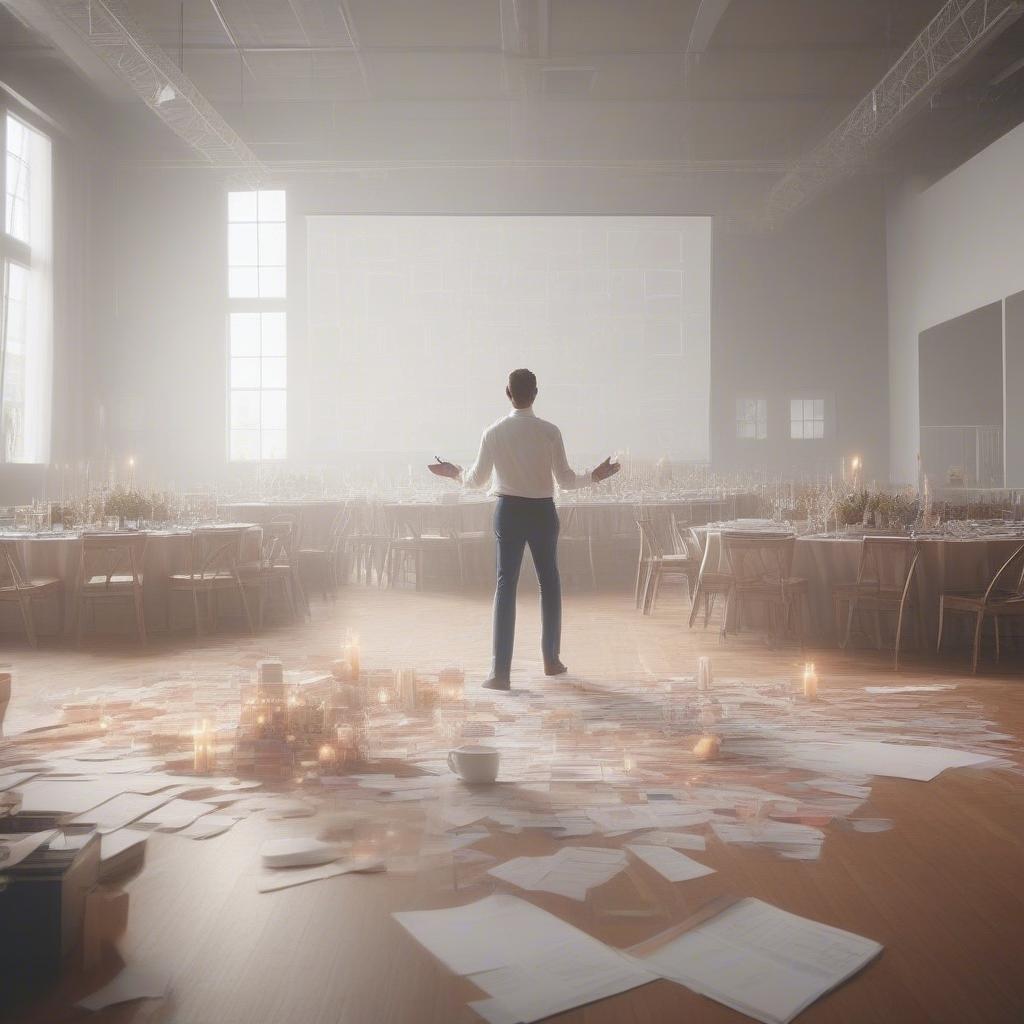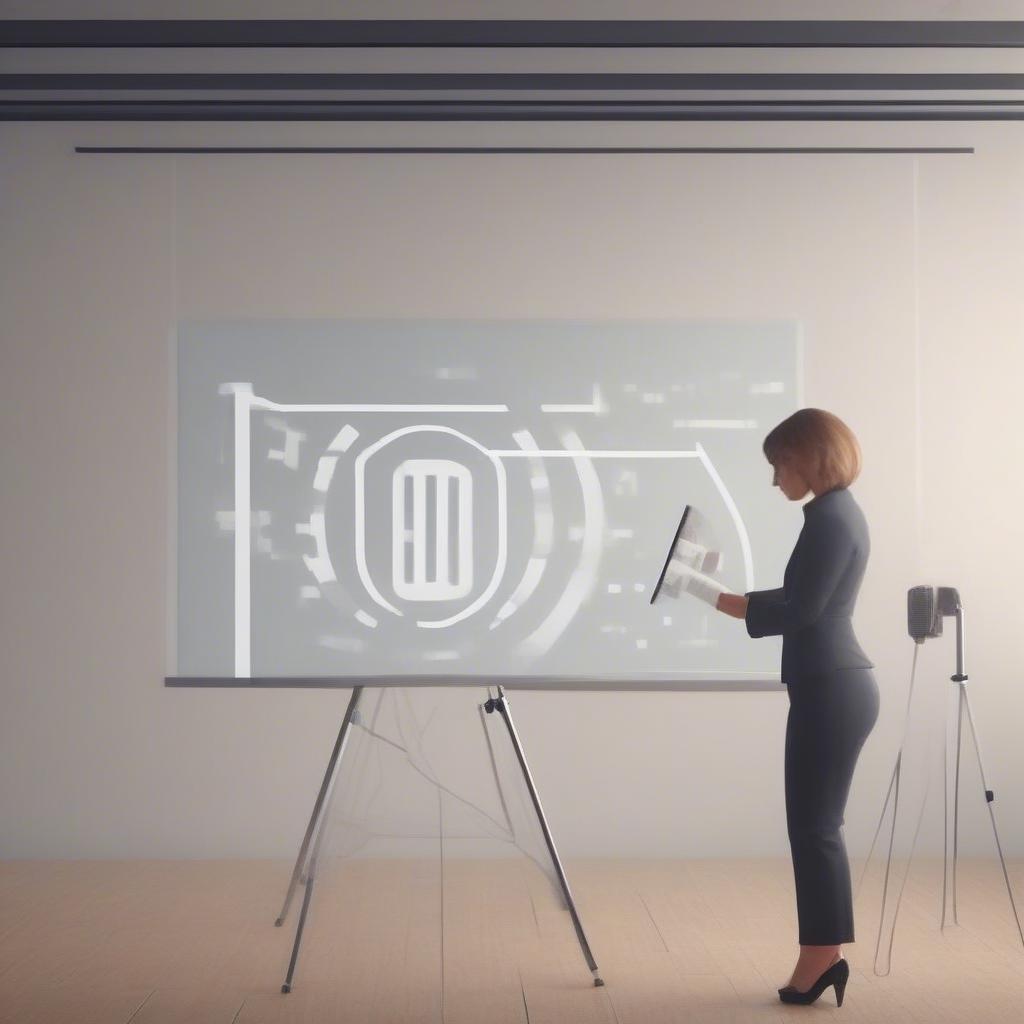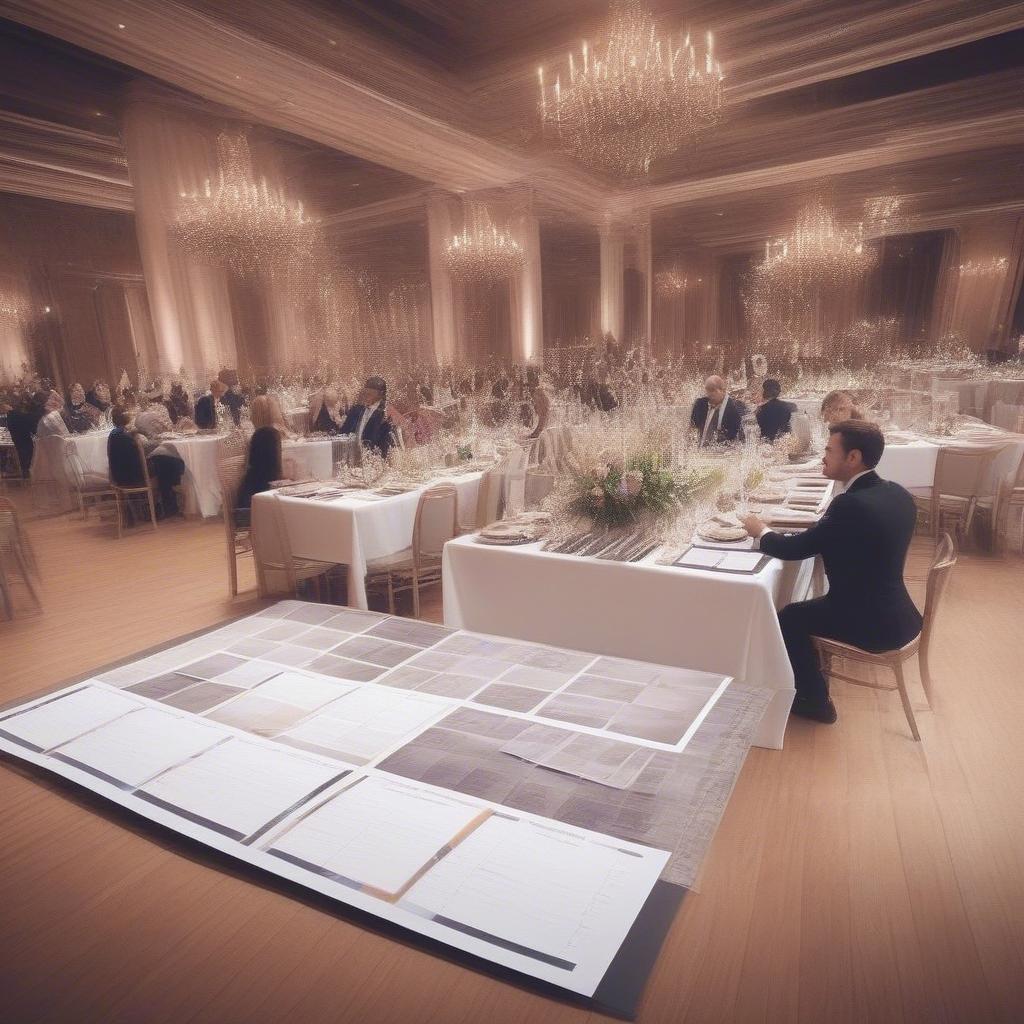
Creativity. It’s not just for artists and musicians anymore. In the fast-paced, ever-evolving world of event planning, creativity is the secret sauce, the magic ingredient that transforms a good event into an unforgettable experience. But what is creativity in the context of event planning, and why is it so crucial? Let’s dive deep and explore how embracing creativity can elevate your event planning game, attracting more clients and creating truly innovative events.
What is Creativity in Event Planning?
Forget the beret and easel. In event planning, creativity isn’t about artistic skill; it’s about problem-solving, innovation, and thinking outside the box. It’s about taking a client’s vision, understanding their needs, and crafting an event that exceeds their expectations in unexpected and delightful ways.
- Problem Solving: Every event faces unique challenges, from budget constraints to logistical nightmares. Creativity helps you find inventive solutions.
- Innovation: Stepping away from traditional, cookie-cutter events and embracing new ideas and technologies.
- Differentiation: Standing out from the competition by offering experiences that are unique and memorable.
- Emotional Connection: Crafting events that resonate with attendees on a deeper level, creating lasting memories.
- Storytelling: Weaving a narrative throughout the event, connecting different elements and engaging the audience.
Think of it as crafting a compelling story, but instead of words, you’re using venues, décor, activities, and even food to tell it.
Why is Creativity Essential for Successful Event Planning?
In a world saturated with events, why should clients choose you? The answer lies in the creativity you bring to the table. Here’s why creativity is no longer optional, but absolutely vital for success:
-
Attracting Clients: Clients are looking for event planners who can bring their visions to life in a unique and exciting way. Showcase your innovative event ideas in your portfolio and marketing materials.
- Benefit: Stand out from the competition and attract clients seeking unique and memorable experiences.
-
Creating Memorable Experiences: People remember events that are different, engaging, and emotionally resonant. Creativity allows you to design events that leave a lasting impression.
- Benefit: Word-of-mouth referrals and repeat business from delighted attendees.
-
Staying Ahead of Trends: The event planning industry is constantly evolving. Creativity allows you to adapt to new trends and technologies, and even set your own.
- Benefit: Remain relevant and competitive in a dynamic market.
-
Maximizing Budget: Creative solutions can often be more cost-effective than traditional approaches. Think repurposing materials, DIY décor, or unconventional venues.
- Benefit: Deliver exceptional events without breaking the bank, increasing profitability.
-
Building a Strong Brand: Develop a reputation for event design excellence and innovation, attracting top talent and clients.
- Benefit: Establish yourself as a leader in the event planning industry.
The Key Elements of Creative Event Planning
So, how do you inject creativity into your event design? Here are the core elements to consider:
1. Understanding Your Audience
Before you start brainstorming, understand who you’re creating the event for. What are their interests, preferences, and expectations?
- Research: Conduct surveys, focus groups, or interviews to gather insights.
- Personas: Develop detailed profiles of your target audience to guide your creative decisions.
- Data Analysis: Analyze past event data to identify what worked and what didn’t.
2. Setting a Clear Theme or Concept
A strong theme provides a framework for all your creative decisions, ensuring that the event feels cohesive and purposeful.
- Brainstorming: Generate a list of potential themes that align with the event’s goals and target audience.
- Mood Boards: Create visual representations of the theme to inspire décor, color palettes, and overall aesthetic.
- Storytelling: Develop a narrative around the theme to engage attendees and create a memorable experience.
3. Venue Selection: Thinking Beyond the Ballroom
The venue sets the stage for your event. Consider unconventional spaces that add character and intrigue.
- Unique Spaces: Explore museums, galleries, warehouses, rooftops, parks, or even private residences.
- Transformations: Look for venues that can be easily transformed to match your event’s theme.
- Accessibility: Ensure the venue is accessible to all attendees, regardless of their physical abilities.
4. Décor and Ambiance: Creating a Sensory Experience
Décor is more than just decorations; it’s about creating an atmosphere that engages all the senses.
- Lighting: Use lighting to set the mood, highlight key features, and create visual interest.
- Sound: Create a custom playlist that complements the event’s theme and energy.
- Scents: Incorporate subtle fragrances to enhance the atmosphere and evoke specific emotions.
- Textures: Use a variety of textures in your décor to create visual and tactile interest.
- Visuals: Incorporate interactive projections, art installations, or live performances to captivate attendees.
5. Food and Beverage: Culinary Creativity
Food and drinks can be a major highlight of any event. Think beyond the standard buffet.
- Themed Menus: Design menus that reflect the event’s theme and cater to dietary restrictions.
- Interactive Food Stations: Offer food stations where guests can customize their dishes or watch chefs prepare food live.
- Signature Cocktails: Create unique cocktails that complement the event’s theme and add a touch of sophistication.
- Local and Sustainable Options: Source food and beverages from local and sustainable suppliers.
6. Entertainment and Activities: Engaging the Audience
Keep attendees entertained and engaged with a variety of activities and entertainment options.
- Live Performances: Hire musicians, dancers, comedians, or other performers to entertain guests.
- Interactive Games: Incorporate games and activities that encourage guests to mingle and have fun.
- Workshops and Demonstrations: Offer workshops or demonstrations related to the event’s theme.
- Photo Booths: Set up a photo booth with props and backdrops to capture memories.
7. Technology Integration: Enhancing the Experience
Technology can enhance the event experience in numerous ways, from interactive displays to virtual reality experiences.
- Interactive Displays: Use touch screens or interactive projections to provide information and engage attendees.
- Virtual Reality: Offer virtual reality experiences that transport attendees to another world.
- Social Media Integration: Encourage attendees to share their experiences on social media using a dedicated hashtag.
- Live Streaming: Stream the event online to reach a wider audience.
- Mobile Apps: Create a mobile app with event information, schedules, maps, and networking features.
Steps to Unleash Your Event Planning Creativity
Okay, enough theory. How do you actually become a more creative event planner? Here’s a step-by-step guide:
Step 1: Embrace Inspiration
- Seek Inspiration Everywhere: Look beyond the event planning industry. Explore art galleries, museums, fashion shows, nature, and even everyday experiences.
- Stay Updated: Read industry blogs, attend conferences, and follow thought leaders on social media.
- Document Ideas: Keep a “swipe file” of inspiring ideas, images, and concepts.
Step 2: Brainstorming Techniques
- Mind Mapping: Start with a central idea and branch out with related concepts.
- SCAMPER: Substitute, Combine, Adapt, Modify, Put to other uses, Eliminate, Reverse.
- Reverse Brainstorming: Identify potential problems and then brainstorm solutions to prevent them.
Step 3: Challenge Assumptions
- Question Everything: Don’t accept the status quo. Ask “why” and “what if” questions.
- Break the Rules: Experiment with unconventional ideas and approaches.
- Embrace Failure: Don’t be afraid to try new things, even if they don’t always work out.
Step 4: Collaborate and Seek Feedback
- Team Brainstorming: Involve your team in the creative process.
- Client Collaboration: Work closely with clients to understand their vision and incorporate their ideas.
- Seek Feedback: Ask colleagues, mentors, or even friends for feedback on your ideas.
Step 5: Implement and Iterate
- Test Your Ideas: Before implementing a new idea, test it on a small scale to see how it works.
- Gather Data: Collect data on attendee engagement and satisfaction.
- Iterate and Improve: Use the data to refine your ideas and make improvements for future events.
Tools and Techniques for Creative Event Design
Here are some practical tools and techniques to help you bring your creative visions to life:
- Mood Boards (Pinterest, Canva): Create visual representations of your event’s theme and aesthetic.
- 3D Modeling Software (SketchUp, AutoCAD): Visualize the event space and décor.
- Event Planning Software (Cvent, Eventbrite): Manage logistics, track budgets, and communicate with attendees.
- Collaboration Tools (Google Workspace, Slack): Facilitate communication and collaboration within your team.
- Social Media Listening Tools (Hootsuite, Sprout Social): Monitor social media conversations and identify trending topics.
Common Pitfalls to Avoid
Even the most creative event planners can fall into traps. Here’s what to watch out for:
- Lack of Audience Understanding: Failing to understand the needs and preferences of your target audience.
- Overcomplication: Trying to do too much and creating an overwhelming experience for attendees.
- Lack of Focus: Losing sight of the event’s goals and creating a disjointed experience.
- Ignoring Feedback: Failing to listen to feedback from attendees and clients.
- Fear of Risk: Sticking to safe, predictable ideas and avoiding innovation.
The Future of Creative Event Planning
The future of event planning is all about personalized experiences, immersive technologies, and sustainable practices. Here’s what to expect:
- Personalized Experiences: Using data and technology to create events that are tailored to individual attendee preferences.
- Immersive Technologies: Incorporating virtual reality, augmented reality, and other immersive technologies to create engaging and interactive experiences.
- Sustainable Practices: Focusing on environmentally friendly practices, such as reducing waste, sourcing local materials, and minimizing carbon footprint.
- Hybrid Events: Combining in-person and virtual elements to reach a wider audience and offer greater flexibility.
- Data-Driven Insights: Using data analytics to track event performance, measure ROI, and make informed decisions.
Learn Business and Creative Event Planning
At Learn Business, we understand the challenges faced by event planners. That’s why we offer guidance and templates tailored to businesses of all sizes, including those in the event planning industry.
How Learn Business Supports Event Planners:
- Business Plan Templates: Craft a comprehensive business plan that outlines your creative vision, target market, and financial projections.
- Marketing Plan Templates: Develop a marketing strategy that showcases your unique event design skills and attracts new clients.
- Financial Templates: Manage your event budgets effectively and track your profitability.
- Legal Document Templates: Protect your business with legally sound contracts and agreements.
- Expert Guidance: Access expert advice and mentorship to help you navigate the challenges of starting and growing an event planning business.
Learn Business can help you streamline your operations, optimize your marketing efforts, and ensure your business is built on a solid foundation. We provide the resources you need to turn your creative vision into a thriving event planning enterprise.
Examples of Incredibly Creative Events
Let’s get those creative juices flowing with some real-world examples:
- Sleep No More (New York City): An immersive theater experience set in a hotel, where attendees are free to roam and interact with the performers.
- Secret Cinema (London): Attendees dress up and become part of the movie they’re watching, creating a truly interactive experience.
- Burning Man (Nevada): A week-long festival of art, music, and community, where attendees create a temporary city in the desert.
- South by Southwest (Austin): A conference and festival that celebrates music, film, and interactive media, showcasing cutting-edge technologies and innovative ideas.
- Tomorrowland (Belgium): A massive electronic dance music festival with elaborate stage designs, pyrotechnics, and immersive experiences.
Final Thoughts: Embrace Your Inner Event Artist
Creativity isn’t just a skill; it’s a mindset. By embracing curiosity, challenging assumptions, and collaborating with others, you can unlock your inner event artist and create truly unforgettable experiences. So, go forth, be bold, and let your creativity shine! The world of event planning is waiting for your innovative events and groundbreaking event design. Now, go out there and make some magic happen! Remember to always keep learning and stay flexible, because the best events are those that adapt and evolve. Good luck!



Leave a Reply